Related Research Articles
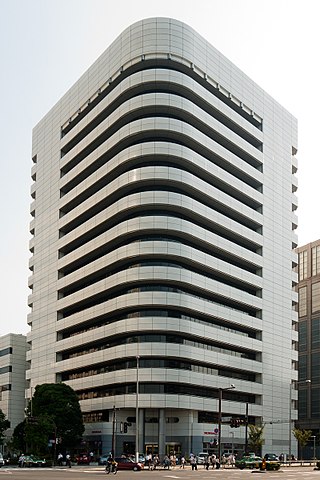
Honda Motor Co., Ltd. is a Japanese public multinational conglomerate manufacturer of automobiles, motorcycles, and power equipment, headquartered in Minato, Tokyo, Japan.
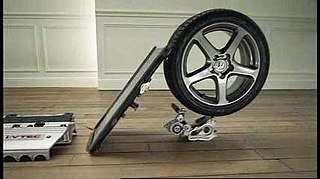
"Cog" is a British television and cinema advertisement launched by Honda in 2003 to promote the seventh-generation Accord line of cars. It follows the convention of a Rube Goldberg machine, utilizing a chain of colliding parts taken from a disassembled Accord. Wieden+Kennedy developed a £6 million marketing campaign around "Cog" and its partner pieces, "Sense" and "Everyday", broadcast later in the year. The piece itself was produced on a budget of £1 million by Partizan Midi-Minuit. Antoine Bardou-Jacquet directed the seven-month production, contracting The Mill to handle post-production. The 120-second final cut of "Cog" was broadcast on British television on 6 April 2003, during a commercial break in ITV's coverage of the 2003 Brazilian Grand Prix.

The Honda Accord, also known as the Honda Inspire in Japan and China for certain generations, is a series of automobiles manufactured by Honda since 1976, best known for its four-door sedan variant, which has been one of the best-selling cars in the United States since 1989. The Accord nameplate has been applied to a variety of vehicles worldwide, including coupes, station wagons, hatchbacks and a Honda Crosstour crossover.
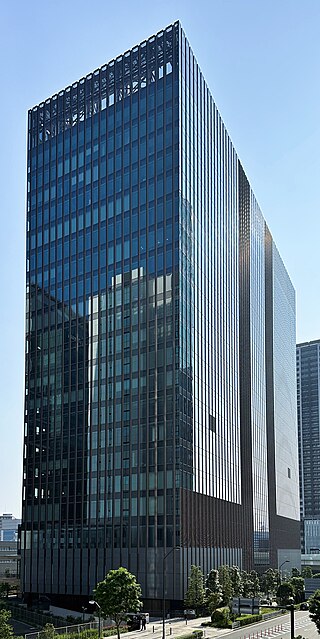
Isuzu Motors Ltd., commonly known as Isuzu, is a Japanese multinational automobile manufacturer headquartered in Nishi-ku, Yokohama. Its principal activity is the production, marketing and sale of Isuzu commercial vehicles and diesel engines.
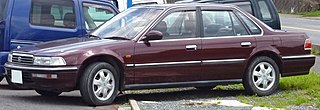
The Honda Ascot is a compact sedan manufactured by Honda and marketed only in Japan from 1989 until 1997. The first generation produced two versions based on the Honda Accord CB series called the Ascot and from 1993 to 1996 a "pillared hardtop" called the Ascot Innova. The Innova shared much of its mechanicals with the European-market Accord manufactured at the Honda UK facility in Swindon, England, and was essentially the badge engineered Rover 600. The second generation was a platform improvement, shared with the Japan-only sedan called the Honda Rafaga. The "Ascot" name was chosen with reference to the Ascot Racecourse and Ascot tie, in order to add the model an alleged air of class and elegance. Honda Ascot was also used on a range of one-cylinder motorcycles in the first half of the 1980s.

Wieden+Kennedy is an American independent global advertising agency best known for its work for Nike. Founded by Dan Wieden and David Kennedy, and headquartered in Portland, Oregon, it is one of the largest independently owned advertising agencies in the world.
Nexus Studios is an animation, film and interactive studio based in London and LA. It was founded in 2000 by Charlotte Bavasso and Christopher O'Reilly.
The Hollywood Film Chorale Sound Effects Choir, also popularly known as the Honda Choir, is an ensemble that can physically produce human sound effects without electronic means. They are well known for two performances in an advertisement for Honda, and at the Academy Awards. It is conducted by Steve Sidwell, who is also the composer of their repertoire. The advert for Honda followed the advert from April 2003, “Cog”, which showcased the Honda Accord.
Honda's Impossible Dream is a panoramic 2-minute-long television commercial that was launched on 2 December 2005 in the United Kingdom. It anchored the "Power of Dreams" campaign which also included a website with extensive information about the series of vintage Honda vehicles that were chosen to illustrate the dreams of the founder of Honda. It was written by Sean Thompson and Chris Groom and Creative Directed by Tony Davidson and Kim Papworth. It features an actor singing, riding and driving across the scenic shorelines and roads of New Zealand, Twin Ring Motegi in Japan, and the Iguazu Falls in South America.
Dreamer is an integrated advertising campaign launched by Diageo in 2001 to promote Guinness-brand draught stout in the United Kingdom. It is the fourth piece of the Good things come to those who wait campaign, following on from Swimblack, Surfer, and Bet on Black. As with the previous pieces of the campaign, Dreamer was handled by advertising agency Abbott Mead Vickers BBDO and comprised appearances in print, posters, and television and cinema spots. The centrepiece of the campaign was the sixty-second television and cinema commercial directed by Jonathan Glazer, who had also directed two of the three previous ads. Post-production work was completed by The Computer Film Company which animated the squirrel sequence. The piece was premiered on SKY television on 6 April 2001, appearing on terrestrial television channels the following day.
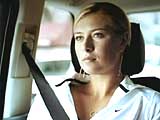
Pretty is a television advertisement launched in 2006 by Nike, Inc. to promote its "Nike Women" brand of sportswear. The 60-second spot was handled by advertising agency Wieden+Kennedy in Portland, Oregon. The advert stars Russian tennis player Maria Sharapova in her first appearance as a spokesperson for the brand. Pretty debuted on U.S. television on August 20, 2006, with later appearances in cinemas and in print advertisements. It was directed by Czech director Ivan Zachariáš, with post-production and VFX work by The Mill.
Honda Advanced Technology is part of Honda's long-standing research and development program focused on building new models for their automotive products and automotive-related technologies, with many of the advances pertaining to engine technology. Honda's research has led to practical solutions ranging from fuel-efficient vehicles and engines, to more sophisticated applications such as the humanoid robot, ASIMO, and the Honda HA-420 Honda-jet, a six-passenger business jet.
Mountain is a 2003 television and cinema advertisement launched by Sony Corporation to promote the PlayStation 2 video game console. The budget for production and advertising space purchases for the 60-second piece amounted to £5m across all markets. The commercial depicts a Brazilian crowd congregating to form a mountain of human bodies, all competing to reach the top of the pile. The campaign surrounding Mountain was handled by advertising agency TBWA London. The commercial was directed by Frank Budgen. Production was contracted to Gorgeous Enterprises, with post-production by The Mill. Mountain premiered in 30 countries on 13 November 2003.

Cake is a television and cinema advertisement launched in 2007 by Škoda Auto to promote the new second-generation Fabia supermini car in the United Kingdom. The 60-second spot forms the centrepiece of an integrated advertising campaign comprising appearances on television, in cinemas, in newspapers and magazines, online, and through direct marketing. The campaign and its component parts were handled by the London branch of advertising agency Fallon Worldwide. Cake was directed by British director Chris Palmer. Production was contracted to Gorgeous Enterprises, with sound handled by Wave Studios. It premiered on British television on 17 May 2007.

Lamp is a television and cinema advertisement released in September 2002 to promote the IKEA chain of furniture stores in the United States. The 60-second commercial was the first part of the "Unböring" campaign conceived by advertising agency Crispin Porter + Bogusky, and follows a lamp abandoned by its owner. It was produced by the production company Morton/Jankel/Zander, and was directed by Spike Jonze. Post-production and editing was handled by Spot Welders and sound design by the California-based MIT Out Sound. The commercial aired concurrently with another IKEA piece in the same vein, titled Moo Cow. Lamp, and its associated campaign, was a popular, critical, and financial success. Sales of IKEA furniture increased by eight percent during the period in which the commercial ran, and Lamp received a number of awards, including a Grand Clio and the Grand Prix at the Cannes Lions International Advertising Festival, considered the most prestigious accolade granted by the advertising community.

Tag is a television and cinema advertisement launched by Nike Inc. in 2001 to promote its line of sportswear in the United States. It was one of four pieces forming the television component of the $25m "Play" campaign, which had been running for several months. Tag was created by advertising agency Wieden+Kennedy. Production was handled by production company Gorgeous Enterprises, who assigned director Frank Budgen to oversee the project. Filming took place in Toronto, Ontario.

The Honda Odyssey is a minivan manufactured by Japanese automaker Honda since 1994, marketed in most of the world and currently in its fifth generation.

The ninth generation Accord is a mid-size car introduced by Honda in 2012 which received a refreshed front fascia, grill, headlights, tail lights and alloy wheel designs for the 2016 model year. With the discontinuation of the smaller European and Japanese market Accord in 2015, the larger North American Accord became the only version in production, with the Hybrid version taking over as the flagship of Honda's automotive product in many markets that once received the smaller Accord.
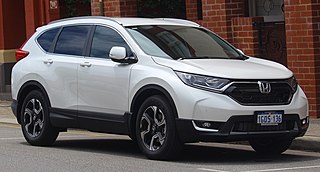
The fifth-generation Honda CR-V is a compact crossover SUV manufactured by Honda since 2016, replacing the fourth-generation CR-V. It was first unveiled on 13 October 2016 in Detroit, United States. Honda began producing the CR-V at East Liberty, Ohio at the East Liberty Auto Plant in November 2016 and at Greensburg, Indiana at the Honda Manufacturing of Indiana plant during February 2017. The fifth-generation of CR-V is available in 5-seater and 7-seater variant in markets other than North America.
References
- 1 2 3 Ann Cooper, Honda "Grrr" (interview with Michael Russoff) Archived 2007-11-09 at the Wayback Machine , one., The One Club, 2005. Retrieved April 20, 2008.
- ↑ Jones, G; "Adland's most creative clients Archived 2008-09-21 at the Wayback Machine ", Campaign, November 5, 2005. Retrieved December 28, 2007
- 1 2 Caso, Frank; "Honda UK: Grrr Campaign"; Encyclopedia of Major Marketing Campaigns, Vol 2., Thomson Gale, pp.745—749. ISBN 978-0-7876-7356-7.
- ↑ Hunsberger, Brent (December 17, 2009). "Nike, Wieden+Kennedy haul in ad of the decade awards". The Oregonian. Retrieved 18 December 2009.
- ↑ "Top Animators For Darklight Masterclass" Irish Film and Television Network, 12 June 2006. Retrieved January 1, 2008.
- ↑ http://www.unit9.com/project/honda-grrr "UNIT9. Retrieved 2014-02-24"